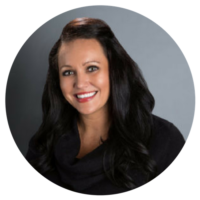One of the first things that I have to determine when doing a myofunctional therapy exam is….can you nasal breathe? It doesn’t make much sense to start myofunctional therapy with someone who physically can’t do it. Nasal breathing is such an integral part of wellness and optimal health. (I’ve talked a lot about it recently here and here and here….)
So that is one place that you can start today…and it will help you move the needle on your myofunctional therapy journey.
- Sit down and relax in a chair. Get comfortable and relax for 5 minutes before beginning!
- Sit upright with good posture, and both feet on the floor.
- Now close your lips completely and take 10 nasal breaths.
- Pay attention to how you feel…does this come naturally? Does it freak you out? Can you do it but its difficult?
- How do you breathe? Do your shoulders or chest rise and fall? Do you belly breathe?
This week’s Facebook Live discussion takes a deeper dive into how this self-discovery test can help direct you on your journey! Ignorance is not bliss. Understanding where to start is one of the easiest ways to help get you going!
If you’re like me and you like to read and further understand from all angles, you can’t go wrong with Ed Harrold or Patrick McKeown. Each of these breathing educators helps you understand the dangers and consequences of incorrect, inadequate or inefficient breathing.

About Carmen
Carmen found her path of passion years ago as a dental hygienist. After a stint in graduate school to earn her M.B.A., she left clinical hygiene practice to start her business, Integrative Myofunctional Therapy. In addition to seeing clients in her private online practice, she also teaches the craft of myofunctional therapy in her Myo Mastery Program, coaches dental offices on how to implement myofunctional screening into the daily practice, and speaks frequently in various settings.
Carmen is a provider for the Foundation of Airway Health, where she works diligently for the recognition, diagnosis, and treatment of airway related disorders.
In addition, she is a proud member of several professional associations that afford her the opportunity to learn so that she can help her clients. Her professional memberships include:


